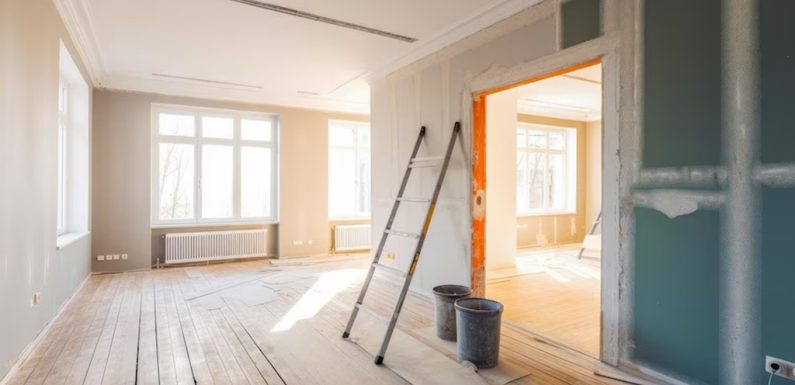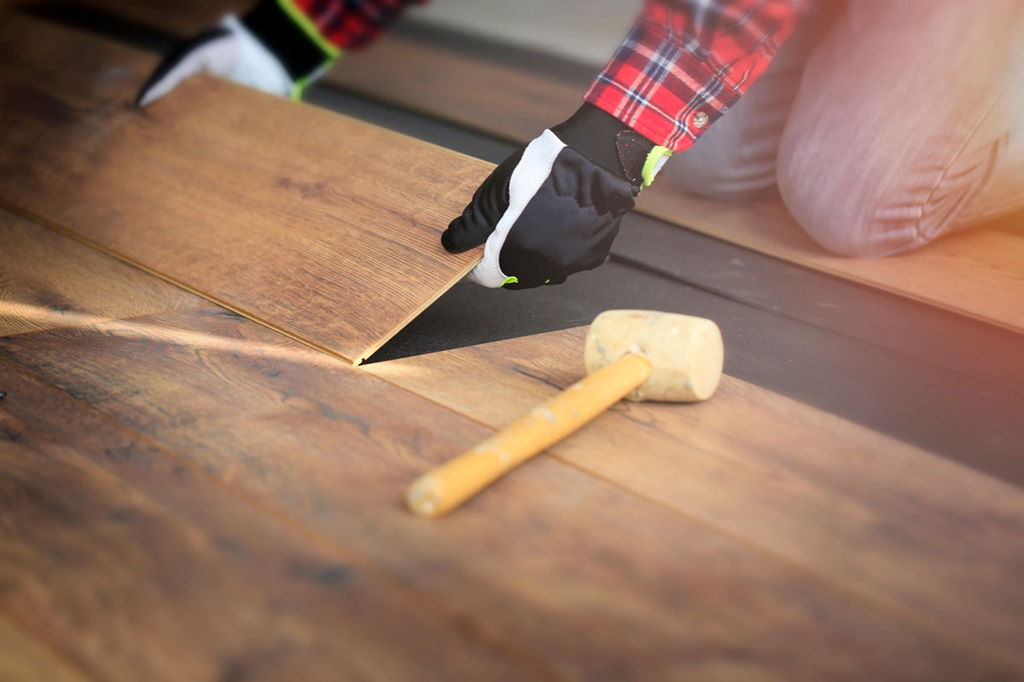
Deciding on the optimal sequence for installing drywall or flooring first is a key decision facing home builders and renovators. The order in which these two major components go will impact construction schedules, quality control, trade coordination, and overall aesthetics. Both approaches of drywall first or flooring first have their unique merits and disadvantages. Carefully weighing the pros and cons of each method can inform an optimal choice tailored to the specific home project goals, construction logistics, and finishing priorities.
Examining the key factors involved in the drywall versus flooring sequence decision allows builders and renovators to make an informed decision resulting in high-quality and efficient results. A thoughtful analysis of the nuances of each installation approach provides valuable insights into choosing the ideal order that will best fit the needs and preferences of any residential construction or remodeling project.
The Case for Installing Drywall First
Installing drywall before flooring became popular in the 1970s and remains a common practice today.
Here are some of the benefits of putting up drywall first:
1. Protects floors from damage.
Floors can easily become scratched, stained, or otherwise damaged during drywall installation and finishing. Heavy sheets of drywall are difficult to maneuver without scuffing floors or leaving dents. Dust and joint compounds also tend to get everywhere, sticking to flooring finishes. Installing drywall first eliminates this problem.
2. Allows access to utilities.
With the flooring not yet installed, plumbers, electricians, and other subcontractors have an easier time accessing pipes, wires, and ductwork concealed below floors for any last-minute changes or repairs. Open floors allow easy inspection of utilities.
3. Permit leveling of floors.
Any minor floor unevenness can be remedied before laying flooring materials. Subfloors may be sanded down in high spots or built up in low spots to achieve levelness across rooms. Drywall installation beforehand allows this finishing work.
4. Facilitates drywall finishing.
Without flooring in the way, working around light switches and outlets and into corners is simpler. The absence of baseboards also lets installers feather joint compound edges fully to walls. This freedom of movement leads to better drywall finishes.
5. Allows flexible flooring choices.
With drywall in place first, homeowners can move forward with choosing and installing flooring materials without needing to match a preexisting floor. The flooring style and layout can be decided later to complement the home’s finishes.
6. Keeps floors pristine after drywall.
Freshly installed flooring won’t get dirty or damaged throughout the drywall finishing process. Floors stay in mint condition when drywall goes up first. Just protect floors as needed when painting interior trim and walls afterward.
In summary, installing drywall before flooring minimizes damage, allows access and repairs, permits leveling subfloors, simplifies finishing, provides flexibility, and keeps floors pristine longer. These benefits make a compelling case for putting drywall first.
The Case for Installing Flooring First

On the other hand, doing flooring plans before drywall gained favor in the 1990s and also has advantages.
Reasons to consider installing floors first include:
1. Avoids floor damage from heavy drywall.
With flooring already in place, installers take extra care not to mar finishes when moving drywall sheets around. Preinstalled floors minimize scuffs, tears, and dents. Drywall crumbs also don’t fall directly onto floors.
2. Allows testing of flooring quality.
Any imperfections in flooring materials become evident before enclosing spaces with drywall. There’s an opportunity to correct flawed floor sections before flooring gets covered up and inaccessible.
3. Permits exact drywall cutting around floors.
Installers can cut drywall sheets precisely to fit flooring thicknesses, allowing close fits to baseboards and thresholds. Custom cutting for each floor’s profile reduces gaps or compression.
4. Facilitates access to floors.
If repairs to flooring are later needed, preinstalled boards or tiles simply lift out since drywall hasn’t yet sealed them in. Access doors can also be cut into drywall above floors needing maintenance.
5. Provides better moisture control.
Floor adhesives and thin-set mortars fully cure first before drywall installation. This prevents excess humidity from wet floors from penetrating and damaging drywall. It also reduces mold risks.
6. Allows early habitability.
With flooring down early, homeowners can occupy spaces sooner without needing to wait for drywall completion. Floors also stay cleaner as other trades finish up.
7. Sets accurate room dimensions.
Exact floor-to-ceiling heights become fixed with floors first. Any variations can be adjusted before drywall goes up by furring out ceilings or walls as needed.
8. Permits easier baseboard installs.
Preset floors enable precise fitting of base trim to floor edges before drywall. Baseboards also sustain less damage if installed beforehand.
To summarize, putting flooring first avoids damage, permits testing and access, allows custom drywall cuts, improves moisture control, enables earlier occupancy, sets accurate room sizes, and simplifies baseboard installation. These pros make a good case for flooring before drywall.
Key Factors in Deciding Between Drywall or Flooring First
With credible arguments on both sides, how do builders and renovators decide?
Here are key factors to consider:
- Flooring type – Resilient vinyl boards and sheet goods hold up fine if drywall goes first. But hardwood merits protection to avoid dents. Large format tiles call for floor-first to allow lippage adjustments under drywall.
- Access needs – If major system updates are required, open floors facilitate work. But minor rewiring or plumbing can be completed before drywall.
- Window specs – With windows and doors in place, sizing drywall first gives precise cuts. If openings get framed later, do floors first.
- Levelness needs – If subfloors require extensive leveling, drywall first is best. But minor variations can be adjusted after flooring.
- Timeline factors – Drywall first suits faster turnaround projects. If time allows, flooring first enables better quality and earlier occupancy.
- Crew experience – Contractors accustomed to drywall-first sequence may resist changing approach midstream. Stick to their expertise.
- Coordination issues – If various subs and crews will be working simultaneously, flooring first reduces damage risks. But a single skilled crew can follow the drywall-first method.
- Homeowner preference – Esthetic tastes factor in too. Advance floor approval and early move-in favor flooring first. Maximum soundproofing supports drywall first.
Considering these factors together for each unique project leads to the ideal sequence decision. Whether new construction or renovations, drywall first remains a smart default choice in many cases. But flooring first has advantages worth weighing, especially for higher-end homes or specialized needs.
Drywall First Installation Process

If selecting the drywall-before-flooring method, follow the best practices for quality results:
Step 1: Inspect and Prepare Floors
- Check subfloors for levelness and make any adjustments needed.
- Address any squeaks by refastening loose decking or floor joists.
- Clean floors thoroughly to remove construction dust and debris.
Step 2: Install Drywall
- Use moisture-resistant drywall in bathrooms, laundry, and other damp areas.
- Lift sheets into place with another worker to prevent damage.
- Fasten with screws to studs, leaving a proper gap at ceilings and walls.
- Stagger seams between sheets and minimize butt joints.
- Run sheets vertically on walls to reduce seams.
Step 3: Finish Drywall
- Complete all taping, bedding, and feathering of seams and corners.
- Fill any cracks or defects thoroughly with joint compound.
- Allow proper curing times between applications.
- Sand joints, angles, and fastener heads until smooth.
Step 4: Prep and Install Flooring
- Once the drywall is painted, protect floors from scrapes, gouges, or other damage.
- Lay finish flooring per manufacturer’s instructions over completely cured subfloors.
- Install baseboards, quarter rounds, and thresholds as needed.
- Seal any gaps between floors and drywall with caulk.
Following these simple drywall-first steps results in durable, high-quality floors free of damage while also enabling optimal drywall finishing.
Flooring First Installation Process
If opting for flooring before drywall, follow these proven methods:
Step 1: Install and Finish Flooring
- Inspect, clean, and level subfloors.
- Lay finish flooring over fully cured subfloor.
- For resilient sheet goods and LVT planks, use full-spread adhesives.
- For hardwood, nail or staple through the tongue into the subfloor.
- For large tile, use mortar and correct lippage before drywall.
- If needed, install base trim boards with removable fasteners.
Step 2: Install Ceilings
- Fasten ceiling drywall first to avoid harming finished floors.
- Take care not to damage walls which will remain exposed until drywall.
- Finish seams and corners as needed on ceilings.
Step 3: Install Wall Drywall
- Have helpers lift sheets and avoid sliding drywall across the floor.
- Make precise cuts around floors for tight fits to baseboards.
- Lay sheets horizontally on walls with seams stacked to maximize support.
- Screw or nail per code minimums, allowing slight gaps for expansion.
- Tape, finish, and sand seams, corners, and fastener dimples smoothly.
Step 4: Finish Walls and Trim
- Prime and paint walls are now accessible with flooring completed.
- Install baseboards, quarter round, and door trim with floors in place.
- Caulk along all joints between floors and drywall for a clean finish.
- Replace any flooring as needed for repairs before final approvals.
By sequencing flooring before drywall, subfloors get enclosed sooner while walls stay accessible longer for needed refinement. The result is durable floors that aren’t damaged during drywall and trim work.
In Summary

There are credible benefits to installing either drywall or flooring first during home building and renovations. Drywall before flooring allows protection from damage, easy utility access, and flexible finish options later. Flooring before drywall enables better quality control, moisture management, and earlier occupancy.
Key factors in choosing drywall or flooring first are flooring type, access needs, window specs, levelness, timeline, coordination, and homeowner preference. Following detailed processes for either approach results in success. Communicating decisions clearly and planning installation logistics appropriately ensures the selected method goes smoothly.
While drywall first remains common practice, flooring before drywall is gaining popularity due to quality and scheduling advantages. With good planning and execution, either sequence can achieve excellent finished results. Carefully weigh the pros and cons for each new project to pick the ideal drywall or flooring first method.
FAQs
What’s the most common sequence?
Drywall before flooring has traditionally been the norm, especially among production builders seeking speed. Many contractors follow this familiar sequence out of habit.
What’s the current trend?
Flooring before drywall is gaining favor due to allowing better floor quality control and faster occupancy. Homeowners also increasingly prefer picking finishes first.
Which is faster overall?
Drywall first can accelerate the overall construction schedule but delays trim and flooring refinement. Flooring first takes longer upfront but allows faster completion and move-in.
Which approach costs more?
Material costs are similar either way. But mistakes and change orders can add cost when flooring goes first. Drywall first may offer more predictability. Labor costs tend to balance out.
How do I choose for my home?
Consider your flooring type, access needs, construction timeline, and coordination capabilities. Also, weigh esthetic priorities like early floor approval or finish flexibility.
Can I do both?
In some cases, starting floors in heavy traffic areas while still roughing in drywall elsewhere combines the benefits of both strategies.
What about soundproofing?
Drywall on ceilings and walls before floors allows maximum noise reduction between rooms above and below. However additional sound insulation in floor assemblies can achieve similar effects.
Do pros have a preference?
Specialized firms tend to stick with what they know best. However experienced general contractors can adapt to either sequence successfully based on each project’s details. Discuss your priorities upfront.
How can I avoid problems?
Good planning, coordination of trades, and attention to detail installation are key. Also, communicate sequence decisively to avoid confusion. Both methods can work well executed properly.

